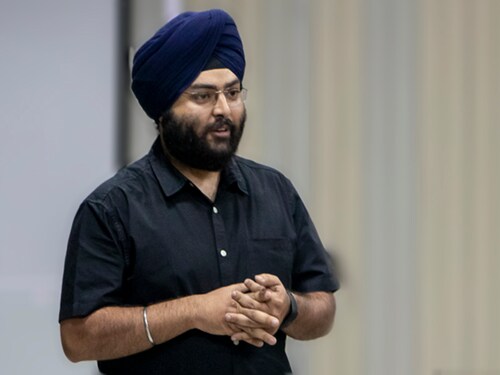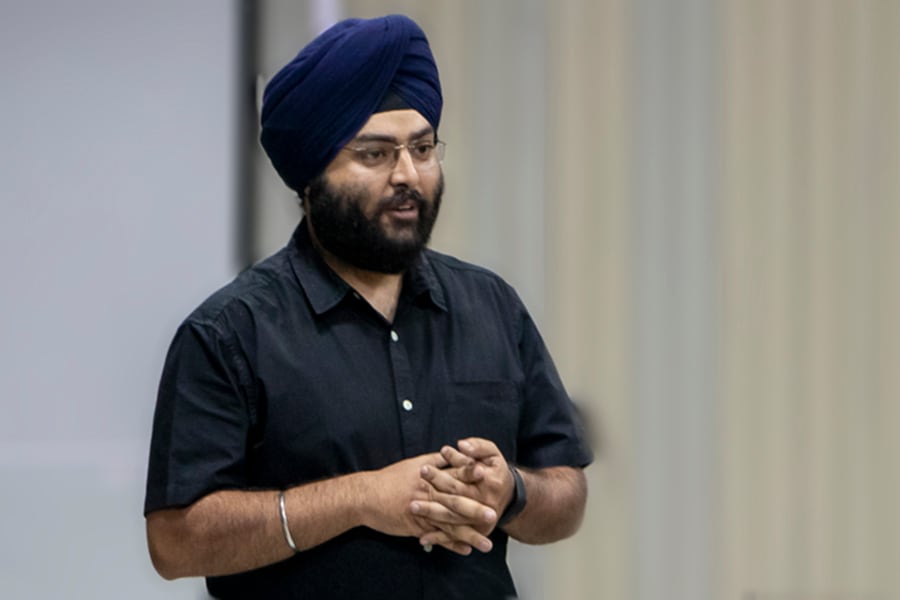'We have to make products for India, not just Made in India'
Paramdeep Singh Anand, CEO of FieldAssist, on investor interest in B2B startups and SaaS as a potential game changer


 Paramdeep Singh Anand, CEO of FieldAssist[br]
Paramdeep Singh Anand, CEO of FieldAssist[br]
From starting bootstrapped in 2014 to striking a run rate of Rs15 crore for the current fiscal and venturing overseas, there is no looking back for sales automation platform FieldAssist. “We are now metamorphosing from a sales automation platform to being a one-stop solution for the entire sales processes,” Paramdeep Singh Anand, CEO of FieldAssist, tells Forbes India in an interview. Edited excerpts:
Q. What were the early challenges in setting up FieldAssist?
There were a lot of challenges when we started in 2014. We were among the first few product companies in India selling SaaS (software as a service or cloud-based solutions) to customers. For decades, Indian enterprise customers have followed a policy of owning their software rather than renting it. Explaining the RoI (return on investment) and overcoming this mindset were significant challenges. On top of it, we were a startup with a bunch of young, tech-oriented, passionate people, quite naive in the industry. But we had identified a problem for the B2B industry, which required us to dig deep into the knowledge base of our vertical. We were pitching to veterans of the trade who had decades of experience in the CPG (consumer packaged goods) industry. Coming out with the Made for India tech solution was an interesting challenge. For instance, in the initial stage of our business, we figured that India is not a DIY (do it yourself) market unlike SaaS in Western countries… instead we needed a curated model of DIFM (do it for me). Therefore, we set up a customer success team to ensure smooth implementations and on-boarding of clients. Over the last five years, we have organised more than 2,000 trainings across Tier I cities and beyond.
Q. Did you face rejection in raising funds for a category like SaaS? What was the reaction of investors?
The investor interest in 2014-15 was more for B2C models, akin to ecommerce in India and since we were operating for the Indian market, there was always an apprehension towards investment in B2B startups such as ours. But we did manage to raise a debt fund from SIDBI that supported us through the time. In the last two years, there has been a new-found interest in funding B2B startups. We are now a profitable company and have grown exponentially.
Q. How fast have you scaled up?
We bootstrapped FieldAssist in 2014, and within five years, we closed FY19 with revenues of Rs9.5… it is likely to end the next fiscal at Rs15 crore. Our GMV (gross merchandise value) is $8 billion and we are reaching out to more than 45 lakh retail outlets with over 40,000 sales representatives via our platform. This year we on-boarded more than 50 large enterprises and 70 SMEs as well. Though majority of our clientele is Indian, we are also expanding in Southeast Asia and the African market.
Q. Why ‘sales automation" has caught the imagination of all companies?
There are two primary reasons: Importance of data and mobile internet revolution. Over the past decade, businesses have been focusing on becoming data-driven to achieve the larger goal of digital transformation and digitisation via analytics. And to achieve this goal, companies are treating data as an important asset. Sales automation helps businesses in collecting and managing data to generate real-time insights for smarter decision making. Secondly, the Indian CPG industry employs a large fleet of field sales representatives who works on field to take orders and maintain relationships with retailers. Earlier, it was difficult for the company to deploy any technology in its sales function due to the cost involved with mobile hardware, internet and training. But the recent mobile internet revolution in India has made it easier for businesses to deploy technology at a low cost. Also it has made the adoption of technology easier.
Q. Do you think SaaS is a potential game changer as far as the retail segment is concerned?
India is on the path to becoming a $5 trillion economy. The role of manufacturing, especially of SMEs, is going to be significant. In fact, there are thousands of small brands which have limited capability in terms of access to legacy or customised technological products for different business functions. SaaS gives a level playing field to everyone to compete. It democratises the software ownership as it’s affordable to everyone without compromising on the capabilities of technology available to them. This I think is simply amazing. Of course, we have to make product for India and not just Made in India. A recent report by Nasscom predicted that the SaaS market in India will reach $3.4 billion by 2022. The market is expanding at a consistent pace of 36 percent every year in the country.
Q. What are the pain points of FMCG and retail companies?
Some of the major pain points are: Absence of real-time visibility of on-field sales data, inefficient performance management of sales team, loss of critical data due to high attrition rates in industry, manual data recording leading to paperwork and wasted man hours, difficulty in monitoring a brand’s performance and visibility at the outlet and assessment of competition effectively.
Q. What differentiates you from other players in the space?
FieldAssist helps brands from maintaining digital records of their sales, inventory, attendance, approval and communications to generate real-time insights into sales operations. While the sales automation platform helps them efficiently track and manage sales by getting clear matrices on the productivity of their sales fleet, distribution management system gives real time stock and sales visibility across the supply chain of the companies.
Q. Did you get your model right from the beginning or had to tweak it as the business evolved?
Good things take time. We had to iterate our model and hone it until we felt it neared perfection, although we will keep evolving it to ensure that it is up-to-date. For instance, earlier, we had done our market segmentation on broad parameters like business volume and number of licenses. Now we are entering into solutions for micro verticals as well… not just CPG but beverages, dairy, stationary etc.
Q. What have been your learnings and challenges?
The top learnings have been to focus on the business-related issues. Still, one can witness how the vitamins don’t sell as much as the painkillers. The solution-seeking approach has to be a creative blend of technology with empathy. The challenges we see are intriguing. We have been able to achieve high trust from our 350-plus clients, but as we expand, we need a new way of thinking for maintaining simplicity in the design of the technology so that adoption of new features is swift and high.
First Published: Jan 03, 2020, 13:52
Subscribe Now